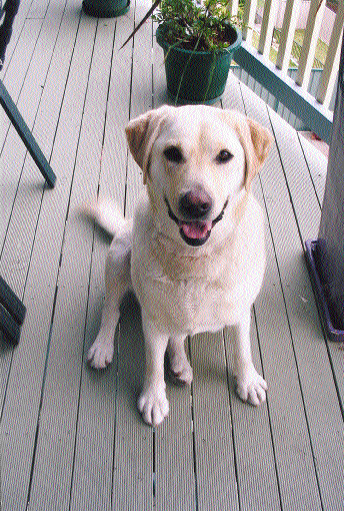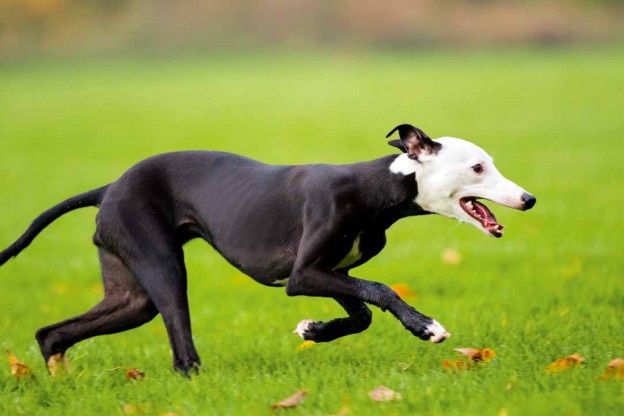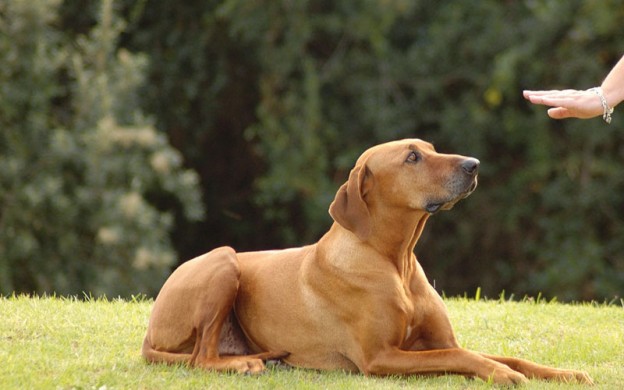
This article first appeared in the March/April 2006 issue of Dogs Life.
Dog training is an essential part of a dogs life, but it can also be very confusing because of the many different forms of training available. Michelle Minehan explains a few of the most common training methods.
Have you ever wondered why there are so many different training schools around town or why people use different methods to train their dogs? Basically, there is a type of training to suit any pooch.
Here at Dogs Life, we don’t believe a dog is untrainable. We think that some dogs may be a little more challenging than others, but if you find the right trainer and the right method, ANY dog can be trained. All it takes is a little patience and understanding.
Reward-based training
Reward-based training is one of the most popular forms of training and has been used successfully throughout the world for many years. It is based on the theory that an animal will perform better and learn much quicker if it is positively rewarded.
Reward-based training is based on proven scientific principles of learning that are common to all animals. The simplest way of describing this training method is that it focuses on catching the dog doing something right and rewarding it for that. It seems very obvious, but it is quite different from traditional training methods.
The traditional training methods are more focused on corrective learning, which means they focus on enforcing the required behaviour, then wait for the dog to make a mistake so it can be punished or corrected for it. (Keep reading to learn why we should stay away from punishment training methods.)
Reward-based trainers tend to ignore things they don’t like and just wait for or prompt for what they want the dog to do. An example of this is in order to stop a dog from jumping, turn your back and ignore the dog while it is jumping, then when it has all four paws back on the ground and is sitting, reward it. Trust me, this method works. I tried it with my Labrador Molly, who had a severe jumping problem, it definitely made her stop.
Dog trainer Jenny Burman works with the Delta Society and says that when used correctly, reward-based training techniques can teach dogs any number of behaviours, whether for competition, fun or just to have a well-behaved dog.
“It is an extremely effective technique,” says Jenny. “Even trainers of dolphins and trainers of exotic animals and animal for movies have used these methods for many years. The best thing about this technique is that it ultimately motivates your dog to want to do the things you want it to do,” she adds “and it definitely helps to get your dog to focus on you.”
Jenny also says that in order to be successful with this type of training, it is extremely important to learn about how to use good timing and other skills to get the behaviour you want out of your dog. It is also important to learn how to establish the behaviours so your dog will perform them whether or not you have treats with you.
“This is very important because if you don’t have this, your dog will not be well behaved when you do not have treats for it.”
The aim of most dog trainers when using rewards-based training methods is to teach the owners to understand what the dog needs, how they learn and what motivates them. Every dog is different so it is vital you learn what is best for your pooch.
“We also teach people how to read dog body language so they can recognise when their dog is scared, confused, frustrated or irritable.”
Despite what many people think, dogs work very hard to avoid conflict with other dogs and people. Unfortunately, a lot of people aren’t aware of dogs body language and see warning behaviours in dogs as signs of guilt or disobedience and subsequently punish them.
“For example, we teach owners to never punish a growling dog because a growling dog is saying please don’t make me bite you.”
Jenny adds that it is foolish, unfair and dangerous to punish the warning because the dog may learn not to warn you and in the future, will simply bite first and ask questions later!
Jenny also stresses that it is important to teach owners to have realistic expectations and know that no training will work overnight.
“Owners seem to think that getting a dog trained will change that dog overnight but its not like that at all. The owner must put in a continuos effort after the initial training takes place.”
Clicker training
Clicker training is another form of reward-based training that is a conditioning method where trainers use a device that is called a clicker. This form of training is largely based on Pavlovs theory on dogs where the trainer clicks the clicker and feeds the dog. Click, feed, click, feed, etc.
A clicker is a little box that makes a click noise when it is pressed; it is used in exactly the same way a dolphin trainer uses a whistle to teach the dolphin those
amazing tricks.
Once your dog knows the sound of the clicker, it learns from the clicking signals a reward is coming. That means the click is used to mark a correct behaviour in the animal that we like; every time the dog does something good, we click and
then reward.
With this form of training it is quite easy and quick to teach a dog something as simple as sit, or even an extremely complicated trick, without ever having to punish the dog.
Sylvia Wilson from Bark Busters says although they don’t use that particular method in training, she can see how it is successful. With clicker training, she says, the dog will eventually respond to the click because it has learned by pleasant association that click means food.
“This is then used as an incentive for the dog to complete certain exercises the same way some dogs are trained to work for food,” she says.
Although not many trainers use this method, those who do swear by it. Research has shown that any creature, especially a dog, is more likely to repeat good behaviour and actions and learn quicker when it associates those actions with good consequences it enjoys.
Clicker training is extremely popular and was largely used originally for dolphin training. In recent years it has been adapted for dog training.
Many people ask the questions: why use a clicker instead of just a word? The answer is simple. A click is more powerful for training than a spoken word because the animal in any other circumstance does not hear it. Our voices can say many different things in many different ways, but to a dog a clicking sound just means one thing: it has done something good and is about to receive a reward for it.
It must be said, though, that the essential difference between clicker training and other reward-based training is that the animal is told exactly which behaviour has earned it a reward.
Puppy training
Puppy training has become extremely popular in recent years, with many puppy owners taking their pups along to a class as soon as they are old enough. Many see it as an essential part of a poochs life in terms of training, but many people sadly believe that after puppy training, there is no need to train them as adults.
“Puppy training is pretty much useless if the training is not continued at home and in classes when they are adults,” says Jenny. “This form of training is really misunderstood; people think that their dog will be a perfect pooch after it and that’s really not the case.”
Jenny explains that it is vital that puppy school is a positive experience for the pup because if its a bad experience this will leave a lifelong impression and make it a lot harder to properly train the dog in the future.
“In the past, puppy schools used to be a bit of a free for all which resulted in shy puppies getting frightened and pushy puppies learning to be bullies,” says Jenny. “The result tends to be dogs with lifelong problems interacting with other dogs. We have since learned that a poorly run puppy school is often much worse for a puppy than no puppy school at all.”
When searching for a puppy school, be sure to do a proper check on the school first. Find out how many puppies will be attending in each class ideally the number will be limited to six; any more and its too much for the pup. Also find out who is running the class and make sure the person is experienced so they will know how to answer all kinds of questions.
“The numbers should not exceed six in a class,” says Jenny “and the number allowed to play together at one time should also be limited, probably to two or three at a time. Another thing Id suggest to the owners is to check if there is an assistant in the class, as it is very difficult to watch the puppies while answering questions.”
Puppy Preschool is a fantastic way to introduce your dog to training and to socialise with other pups and humans, but remember it is only an introduction and training must be continued if you want to have a well-behaved dog.
Although there are many different forms of training to choose from from beginners to advanced Jenny says many owners just want to train their dog to a point where they simply enjoy living with it.
“Owners are not really interested if the dog sits dead straight in front of them or heels in perfect alignment to their leg,” she says. “They just want a dog that obeys their basic commands.”
Research shows that the majority of dog owners would just like their dog to follow the simple rules:
Come when called
Walk nicely on a lead
Interact nicely with other dogs and people
Not destroy the house or garden.
Ultimately, dog trainers are interested in helping people and dogs get along well and be socially acceptable so dogs continue to be welcome in our society. With all the dog attacks that have been highlighted in the media lately, many people are becoming wary of our four-legged friends, which makes it even more important to have well-trained pooches.
Remember, when choosing which method you would like to use when getting your pooch trained, take into consideration which method you would most likely be able to continue with once the formal training has ended.
NO NO!! Punishment training
Times have definitely changed and these days the majority of dog owners and people in general will recognise that punishment training is not an effective training method; it is only cruel.
“Dogs are learning all the time, whether we train them or not,” says Jenny. “Dogs do not do things deliberately to annoy people. If they do something we don’t like, it is usually because we never got around to teaching them what we do want.”
Jenny adds that although it is only human nature to want to reprimand or punish a dog when it does something wrong, people have got to think about what the dog will actually learn from that.
“Often it is not what we think they should learn,” she says. “The dog that gets punished for the hole in the backyard only learns to be wary of you when you get all angry looking. The dog might even start to realise that you get really angry about holes in the ground. But to connect these events to the digging of the hole some hours before requires human intelligence; the digging was fun for the dog and therefore there was no punishment involved in that!”
When using the punishment method of training, all you will probably end up with is a dog that is scared and wary of you and as a consequence is unlikely to do what is asked of it. A dog can only see its owner as angry but cannot relate the anger to something it has done. It therefore doesn’t see that the owner is actually angry at it for what it has done.
When you punish your dog there are many unavoidable side-effects that occur, the most common of these being:
Anxiety
Escape
Aggression
Apathy
All of the above can cause great harm to your beloved pooch and possibly to humans as well. When a dog has been mistreated, it is more likely to attack when feeling threatened.
“If possible, it will try to escape. If it cannot escape, it will often become aggressive not only to the punisher, but often to other creatures or objects in the vicinity,” says Jenny.
The good news is that dogs are very forgiving animals and if you have used this method before but would like to start over, it is very easy to do.
“Yes, you can teach old dogs new tricks!”
Sylvia Wilson is extremely passionate about this topic and says she does not at all believe in the time out method that has become very popular in todays training methods.
“You can liken this to solitary confinement,” says Sylvia. “Dogs are pack animals and no canine pack leader would ever treat a pack member this way. I believe this is totally wrong and not canine friendly at all. Dogs would never discipline each other in this fashion, ever.”
So before you punish your dog for doing things that may annoy you, ask yourself: who has been training your dog? Did you let him train himself? In which case hes not misbehaving at all, just doing what comes naturally.







